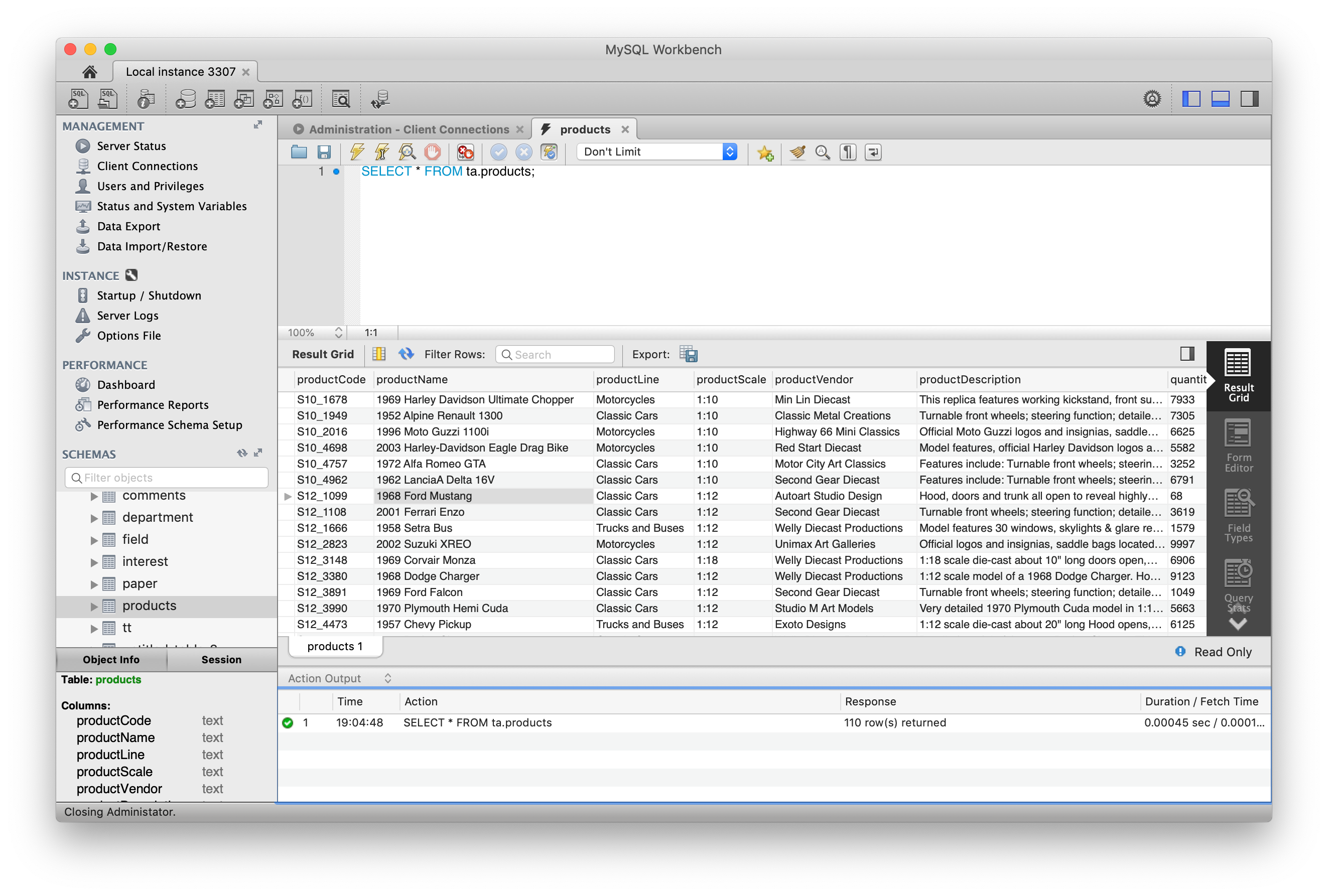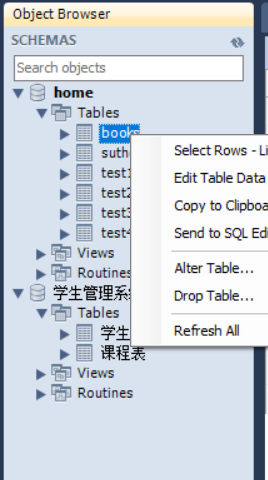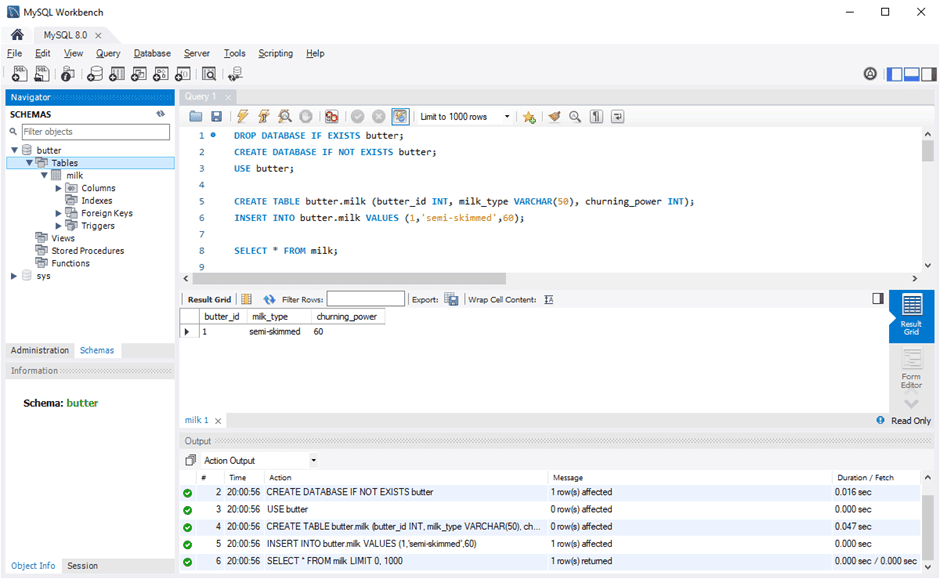

- #MYSQL WORKBENCH EDIT TABLE DATA INSTALL#
- #MYSQL WORKBENCH EDIT TABLE DATA PASSWORD#
- #MYSQL WORKBENCH EDIT TABLE DATA PLUS#
- #MYSQL WORKBENCH EDIT TABLE DATA MAC#
There's a toolbar that applies to this editor that you can see here. It's where you can write and run SQL queries. The middle part of the window is the editor pane, and this is the main part of the editor. You've also got a range of icons here on the toolbar. On Windows, they are within the application, but in either case, they are in this area of the screen. On a Mac, they are at the very top of the screen. At the top, you have a toolbar this contains the menus, such as file and edit. The editor has several panels that serve different purposes. The screen changes to the main MySQL workbench editor. After a moment, the database should be connected.

MySQL Workbench will connect to the database. To connect to a database, click on the connection box. You can also add new connections, delete connections, duplicate existing connections, and move connections up and down the list in this window. Select the connection you want to edit, change the details you need to change, click Test Connection to test it, and click Close.
#MYSQL WORKBENCH EDIT TABLE DATA PLUS#
Or, you can click on the spanner icon next to the plus icon here, which opens a window of all connections. To do this, right-click on the connection box and select Edit Connection. If you get some of the details wrong or want to change a connection after you have created it, you can. The connection will show as a new box on the Home tab, with the name you gave it on the top of the box. Once the connection test is successful, click OK, and the connection will be saved. If not, you can investigate the issue and correct it. If they are, it will show a success message. This will simulate a connection to the database, and it's a good way to check that the details you have entered are correct. Once you've entered the connection details, click on the Test Connection button. If you want to enter it every time for security reasons, you can skip this.
#MYSQL WORKBENCH EDIT TABLE DATA PASSWORD#
You can specify a password by clicking on Store in Keychain, which will store the password you enter and not ask you for the password every time you connect. I'll call this one "mysql demo," but you can call yours whatever you like. Enter the connection name, which is the name you want to give the connection, and it will show on the Home Tab. If you've set up a database on your computer, for example, you may use the server name of localhost and the username of root. The exact details will depend on how you've set up your database, which might be different from mine. This could be a database running on your computer or on another server. Enter the details to connect to the database. This is the New Connection window, and it's where you enter all of the details for your MySQL database connection. Click the plus sign (+) next to MySQL Connections to get started.Ī new window will open. Create a new connection in MySQL Workbench You can have multiple connections set up. A connection is a group of settings that allow you to connect to a database server and run queries. This will be empty the first time you launch MySQL Workbench, as seen in the picture above. The connections, represented by these boxes here, make up the majority of this screen. The Home tab is the first tab you see when you launch MySQL Workbench. Once you have opened MySQL Workbench, it looks like this. Click on the following link- MySQL Downloads

If you require one, you can get the MySQl Community Edition database from the MySQL website. Having access to a MySQL database is also required.
#MYSQL WORKBENCH EDIT TABLE DATA INSTALL#
If not, get it from the MySQl website and install it using the instructions. I'll assume MySQL Workbench is already set up on your computer.
#MYSQL WORKBENCH EDIT TABLE DATA MAC#
There are versions of MySQl Workbench for Windows, Linux, and Mac OS. Data modeling, SQL development, extensive server configuration, use administration, backup, and other administration capabilities are all provided by MySQL Workbench. What is MySQl Workbench?Ī graphical application for working with MySQL servers and databases is called MySql Workbench. In this article, I'll go through all of MySQL Workbench's main features, including connecting to databases, the tool's design, and composing and executing SQL queries.


 0 kommentar(er)
0 kommentar(er)
